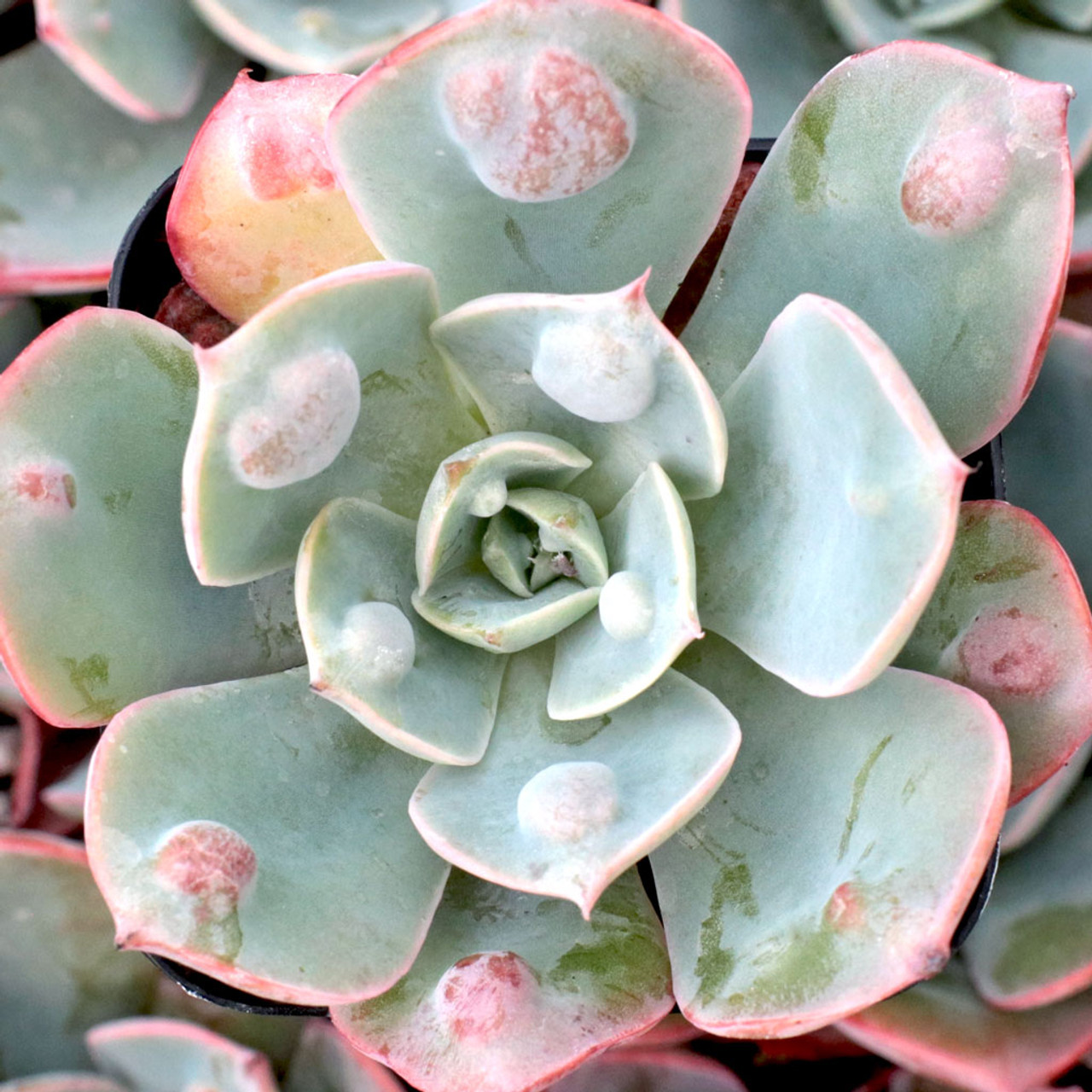
When you already have the sources, the next thing to do is prepare a well-draining tray and a mix of cacti soil or use your soil mix.

Securing a quality Raindrop Echeveria seeds is essential because some seller tends to sell fake seeds. To do this, you need to have quality Raindrop Echeveria seeds. Propagating Raindrops Echeveria might not be as easy as the other methods, but it will surely be worth the wait. So, prepare a well-draining pot with a mix of cacti soil, then plant the stem. After two days of waiting, your branch is ready to be planted. Remove the leaves underneath the stem afterward and let it callous for two days. Take note to leave 2 inches from the roots before cutting. In doing so, choose a matured stem, then cut it using a clean and sharp scissor or knife. You can also propagate Raindrops Echeveria by stem cutting. Plant the leaf, then water after two weeks or until the soil dries out. After two days, prepare a well-draining pot and pour a mix of cacti soil in it or any equivalent soil mix. If the plant has matured and healthy leaves, then you’re good to go.ĭetached the plate from the stem and let its ends dry for two days. Raindrop Echeveria also reproduced through their leaves. You can refer to the information below for propagation tips. Propagating a succulent is cheaper and budget-friendly because you do not need to buy a new plant. You can do it by using the leaves, stem cutting, seeds, or offsets. Raindrops Echeveria can reproduce in four easy ways. If this happened, it is better to consult a doctor. But if you ate this succulent, it may cause diarrhea, nausea, or vomiting. Raindrops Echeveria is safe for humans and pets because it is a non-toxic plant. Repotting is also essential in propagation, but other than those two, repotting the Raindrops Echeveria is unnecessary. If you have just bought it, of course, you need to repot it into your chosen pot. The Raindrops Echeveria does not require repotting often. In growing a Raindrop Echeveria, always choose a pot that will provide enough drainage for your plant. Using a well-draining container is vital because the Raindrops Echeveria does not like to sit in water as it may cause root rotting that will indeed affect the main plant. Doing this will prevent the insects from coming back to your plant. To remove these insects, spray the plant with isopropyl alcohol with at least 70% solution. Succulents can easily attract insects, which may cause disease to the plant. Pruning is what you can do to help your plant. Removing the dead leaves from the Raindrop Echeveria stem will help the plant grow and be healthy. It is advisable to use a weak fertilizer if needed. Sometimes, over-fertilization harms the plant and might even kill it. Raindrops Echeveria does not require fertilizers often because the soil is enough for them to grow. Lastly, mix the three ingredients evenly. Second, using a measuring cup, get 3 cups of potting soil, 2 cups of coarse sand, and 1 cup perlite or pumice. You can search for the process or follow this simple guide in making your soil mix.įirst, you need well-draining potting soil, coarse sand, and perlite or pumice. It is a smart choice to choose a well-draining medium for your Raindrops Echeveria.Īn equal part bagged of standard potting mix can substitute for a combination of cacti soil, or you can make your soil mix if you wish to do so. Most gardeners used a mix of cacti soil with coarse sand to plant or grow a succulent. For the Raindrop Echeveria to survive, it is ideal to have a temperature of 65-70° F. Like most succulents, Raindrops Echeveria is a summer plant that can’t thrive in cold weather unless was put indoors. Outdoors – In growing Raindrops Echeveria outdoors (which is the best), put it in a location where it can get morning sun or partial shade.

Indoors – In growing Raindrops Echeveria indoors, place it in a sunny window to get enough sunlight. The Raindrops Echeveria can grow indoors or outdoors as long as it gets enough sunlight exposure because this succulent prefers bright light. You only need to water the plant once the soil dries out, maybe after a week or two.


It is also necessary to remember that poor watering habits may harm the Raindrop Echeveria. In watering the Raindrops Echeveria, avoid wetting the leaves and target only the soil and roots. Like the Raindrops Echeveria, succulents have water storage tissue in their stem, roots, and leaves that is why succulents only need low water maintenance.


 0 kommentar(er)
0 kommentar(er)
